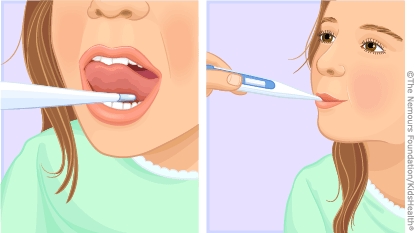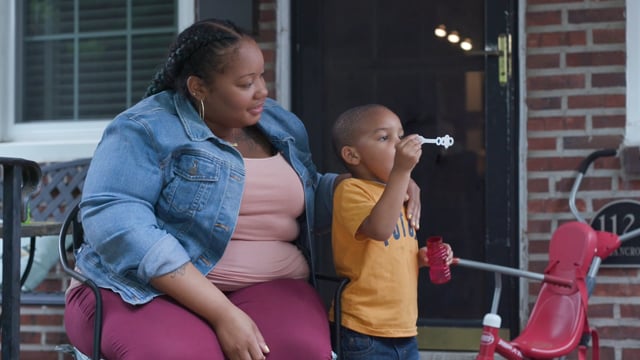- Parents Home
- Para Padres
- A to Z Dictionary
- Allergy Center
- Asthma
- Cancer
- Diabetes
- Diseases & Conditions
- Doctors & Hospitals
- Emotions & Behavior
- First Aid & Safety
- Flu (Influenza)
- Food Allergies
- General Health
- Growth & Development
- Heart Health & Conditions
- Homework Help Center
- Infections
- Newborn Care
- Nutrition & Fitness
- Play & Learn
- Pregnancy Center
- Preventing Premature Birth
- Q&A
- School & Family Life
- Sports Medicine
- Teens Home
- Para Adolescentes
- Asthma
- Be Your Best Self
- Body & Skin Care
- Cancer
- Diabetes
- Diseases & Conditions
- Drugs & Alcohol
- Flu (Influenza)
- Homework Help
- Infections
- Managing Your Weight
- Medical Care 101
- Mental Health
- Nutrition & Fitness
- Q&A
- Safety & First Aid
- School, Jobs, & Friends
- Sexual Health
- Sports Medicine
- Stress & Coping
parents
How to Take an Oral Temperature
How Do I Take an Oral Temperature?
Taking an oral temperature is easy in an older, cooperative child. Most kids can have their temperature taken this way when they’re about 4–5 years old.
- Use a digital thermometer. (Don’t use a glass thermometer, as these aren’t safe.)
- Wait 20–30 minutes after your child finishes eating or drinking to take an oral temperature, and make sure there's no gum or candy in your child's mouth.
- Place the tip of the thermometer under the tongue and ask your child to close their lips around it. Tell your child not to bite down or talk, and to relax and breathe normally through the nose.

- Wait until you hear the right number of beeps or other signal that the temperature is ready to be read. Write down the number on the screen, noting the time of day that you took the reading.
- A reading of 100°F (37.8°C) or above means your child has a fever.

Taking Your Child’s Temperature
Your child feels warm, but is it a fever? Now, more than never, it’s important to know. Here's how to use a thermometer to get an accurate reading at every age.
Medically reviewed by: Melanie L. Pitone, MD
Date reviewed: November 2022

© 1995- The Nemours Foundation. KidsHealth® is a registered trademark of The Nemours Foundation. All rights reserved.
Images sourced by The Nemours Foundation and Getty Images.
